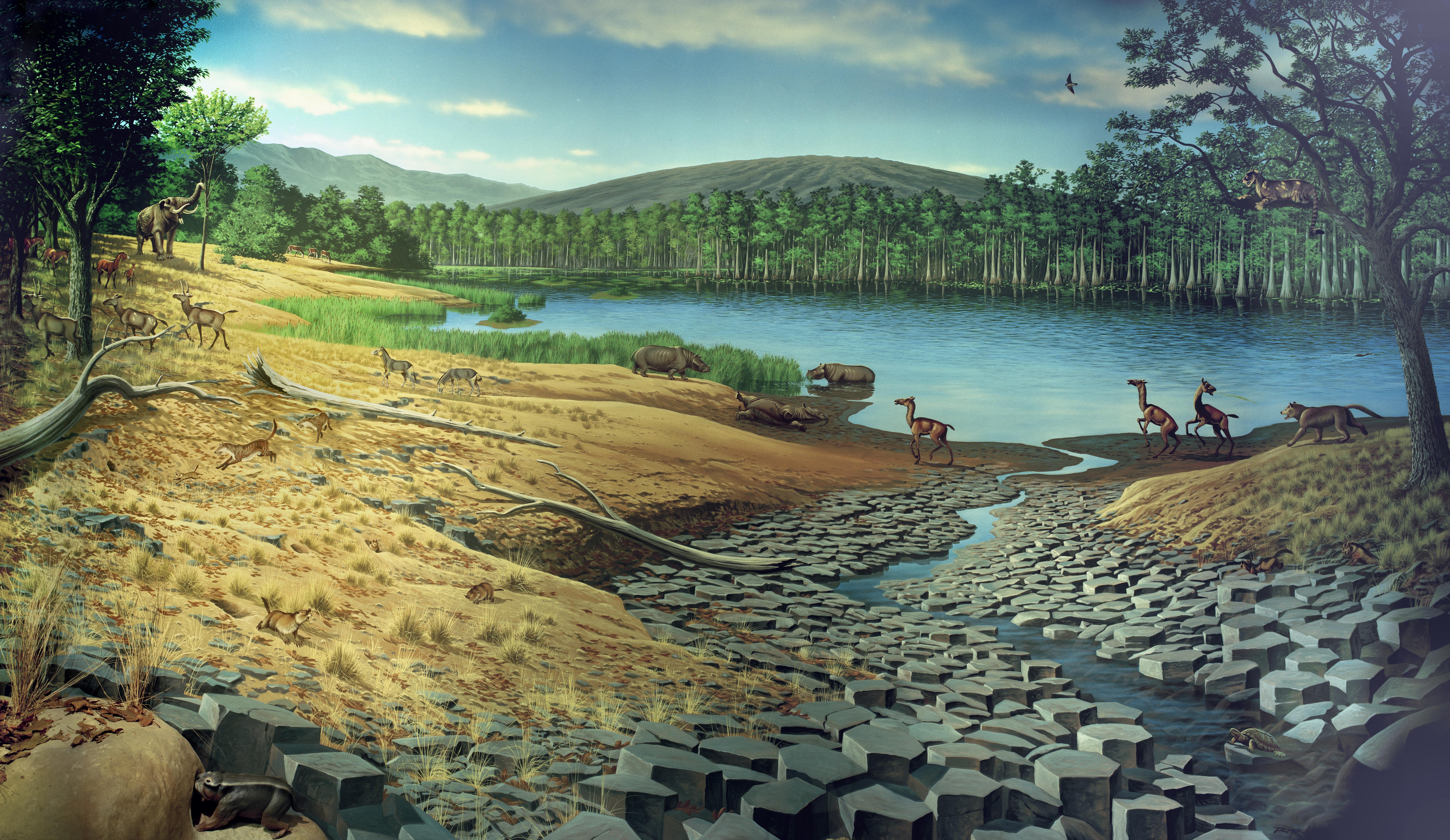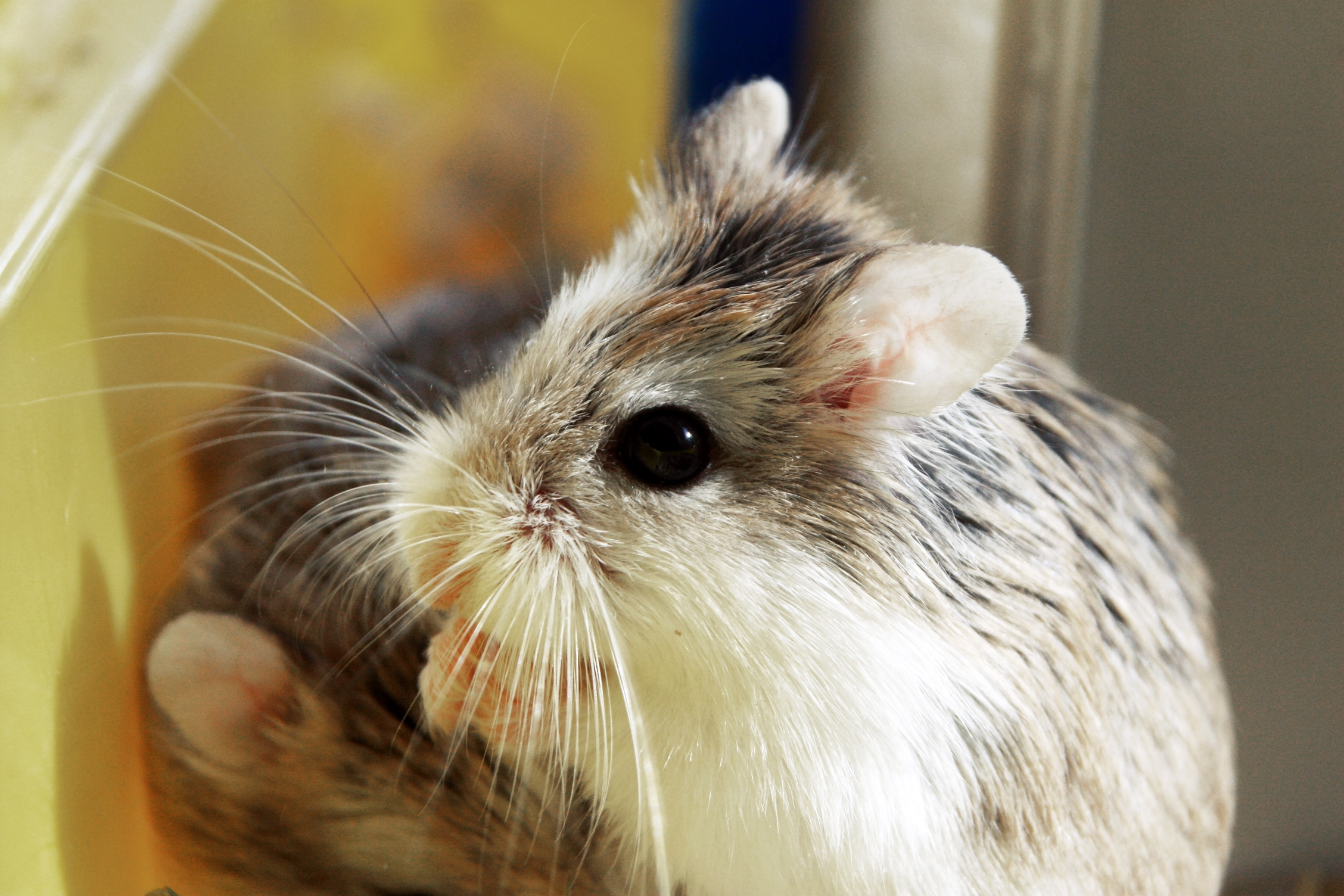|
Vallesian
The Vallesian age is a period of geologic time (11.6–9.0 Ma) within the Miocene used more specifically with European Land Mammal Ages. It precedes the Turolian age and follows the Astaracian age. The so-called Vallesian Crisis resulted in the extinction of several mammalian taxa characteristic of the Middle Miocene. The term "Vallesian" was introduced by Catalan palaeontologist Miquel Crusafont in 1950 to mark the arrival of the equid '' Hipparion'' in Europe. The remaining European palaeofaunas, however, had been around since the Middle Miocene, including the moschid '' Micromeryx'' (a musk deer), the cervid '' Euprox'', the suid ''Listriodon'', and the felids '' Sansanosmilus'' and '' Pseudaelurus'', and the Aragonian-Vallesian"Aragonian" is a Spanish term for a continental stage, roughly equivalent to the Middle Miocene or Astaracian (16–11 Ma). boundary does not represent a major shift in the European mammalian record. In contrast, the transition between Lower and Uppe ... [...More Info...] [...Related Items...] OR: [Wikipedia] [Google] [Baidu] |
Astaracian
The Astaracian age is a period of geologic time (), equivalent with the Middle Miocene and used more specifically with European Land Mammal Ages. It precedes the Vallesian age and follows the Orleanian age. The Astaracian overlaps the Langhian and Serravallian ages. During the Late Orleanian and Astaracian (), oscillating sea levels resulted in a succession of palaeogeographic changes in the Eastern Mediterranean; the opening and closing of the Tethys seaway resulted in temporary land-bridges between Africa and Eurasia. Three short periods of faunal migrations between the continents can be distinguished: During the Late Orleanian, MN 5 (), a first wave of migrations from Africa correspond to fossil fauna from Greece. The Antonios locality (MN 4/5, ) on the Chalkidiki peninsula includes the small tragulid '' Dorcatherium'', the giraffid '' Palaeomeryx'', and the suiform '' Sanitheres''. The Thymiana locality (MN 5, ) on Chios includes both the giraffid '' Georgiomery ... [...More Info...] [...Related Items...] OR: [Wikipedia] [Google] [Baidu] |
Tragoportax
''Tragoportax'' is an extinct mammal genus belonging to the Bovidae. Description ''Tragoportax'' could reach a considerable size: the largest specimens must have weighed up to 200 kilograms. It had long legs, a skull with a short snout and elongated rear skull, while the antlers were large and curved backwards; the antlers of females and young were smaller and thinner than those of adult males. The cross-section of the horns was usually triangular or subtriangular; the horns had a well-marked posterolateral keel and flat sides. Compared to those of the related species ''Miotragocerus'', the horns were less laterally compressed. The teeth were high-crowned and fitted with dental cement, like those of the present-day nilgai, to which it was closely related. In g ...[...More Info...] [...Related Items...] OR: [Wikipedia] [Google] [Baidu] |
Miocene
The Miocene ( ) is the first geological epoch of the Neogene Period and extends from about (Ma). The Miocene was named by Scottish geologist Charles Lyell; the name comes from the Greek words (', "less") and (', "new") and means "less recent" because it has 18% fewer modern marine invertebrates than the Pliocene has. The Miocene is preceded by the Oligocene and is followed by the Pliocene. As Earth went from the Oligocene through the Miocene and into the Pliocene, the climate slowly cooled towards a series of ice ages. The Miocene boundaries are not marked by a single distinct global event but consist rather of regionally defined boundaries between the warmer Oligocene and the cooler Pliocene Epoch. During the Early Miocene, the Arabian Peninsula collided with Eurasia, severing the connection between the Mediterranean and Indian Ocean, and allowing a faunal interchange to occur between Eurasia and Africa, including the dispersal of proboscideans into Eurasia. During the la ... [...More Info...] [...Related Items...] OR: [Wikipedia] [Google] [Baidu] |
Turolian
The Turolian age is a period of geologic time (9.0–5.3 Ma) within the Miocene used more specifically with European Land Mammal Ages. It precedes the Ruscinian age and follows the Vallesian age. The Turolian overlaps the Tortonian and Messinian The Messinian is in the geologic timescale the last age or uppermost stage of the Miocene. It spans the time between 7.246 ± 0.005 Ma and 5.333 ± 0.005 Ma (million years ago). It follows the Tortonian and is followed by the Zanclean, the fir ... ages. ;References Miocene {{geochronology-stub ... [...More Info...] [...Related Items...] OR: [Wikipedia] [Google] [Baidu] |
Pseudaelurus
''Pseudaelurus'' is a prehistoric cat that lived in Europe, Asia and North America in the Miocene between approximately twenty and eight million years ago. It is considered to be a paraphyletic grade ancestral to living felines and pantherines as well as the extinct machairodonts (saber-tooths), and is a successor to '' Proailurus''. It originated from Eurasia and was the first cat to reach North America, when it entered the continent at about 18.5 Ma ending a ' cat-gap' of 7 million years. The slender proportions of the animal, together with its short, viverrid-like legs, suggest that it may have been an agile climber of trees. Species and distribution ''Pseudaelurus quadridentatus'' weighed about and was approximately the size of a cougar. ''Pseudaelurus guangheensis'' from the middle Miocene of Gansu (China) and ''Pseudaelurus cuspidatus'' from the middle Miocene of Xinjiang (China) are reported. Taxonomy and phylogeny Traditionally all the ''Pseudaelurus''-g ... [...More Info...] [...Related Items...] OR: [Wikipedia] [Google] [Baidu] |
Geologic Time
The geologic time scale, or geological time scale, (GTS) is a representation of time based on the rock record of Earth. It is a system of chronological dating that uses chronostratigraphy (the process of relating strata to time) and geochronology (scientific branch of geology that aims to determine the age of rocks). It is used primarily by Earth scientists (including geologists, paleontologists, geophysicists, geochemists, and paleoclimatologists) to describe the timing and relationships of events in geologic history. The time scale has been developed through the study of rock layers and the observation of their relationships and identifying features such as lithologies, paleomagnetic properties, and fossils. The definition of standardized international units of geologic time is the responsibility of the International Commission on Stratigraphy (ICS), a constituent body of the International Union of Geological Sciences (IUGS), whose primary objective is to preci ... [...More Info...] [...Related Items...] OR: [Wikipedia] [Google] [Baidu] |
Cricetidae
The Cricetidae are a family of rodents in the large and complex superfamily Muroidea. It includes true hamsters, voles, lemmings, muskrats, and New World rats and mice. At almost 608 species, it is the second-largest family of mammals, and has members throughout the Americas, Europe and Asia. Characteristics The cricetids are small mammals, ranging from just in length and in weight in the New World pygmy mouse up to and in the muskrat. The length of their tails varies greatly in relation to their bodies, and they may be either furred or sparsely haired. The fur of most species is brownish in colour, often with a white underbelly, but many other patterns exist, especially in the cricetine and arvicoline subfamilies. Like the Old World mice, cricetids are adapted to a wide range of habitats, from the high Arctic to tropical rainforests and hot deserts. Some are arboreal, with long balancing tails and other adaptations for climbing, while others are semiaquatic, ... [...More Info...] [...Related Items...] OR: [Wikipedia] [Google] [Baidu] |
Schizochoerus
''Schizochoerus'' was an extinct genus of even-toed ungulates that existed in Asia Minor during the Miocene. References Prehistoric Suidae Fossil taxa described in 1954 Miocene even-toed ungulates Miocene mammals of Asia Prehistoric even-toed ungulate genera {{paleo-eventoedungulate-stub ... [...More Info...] [...Related Items...] OR: [Wikipedia] [Google] [Baidu] |
Adcrocuta
''Adcrocuta'' is an extinct genus of terrestrial carnivore in the family Hyaenidae that lived during the Miocene period The Miocene ( ) is the first geological epoch of the Neogene Period and extends from about (Ma). The Miocene was named by Scottish geologist Charles Lyell; the name comes from the Greek words (', "less") and (', "new") and means "less recent" .... References Miocene feliforms Miocene mammals of Africa Miocene mammals of Asia Prehistoric hyenas Prehistoric carnivoran genera Fossil taxa described in 1938 {{paleo-carnivora-stub ... [...More Info...] [...Related Items...] OR: [Wikipedia] [Google] [Baidu] |


